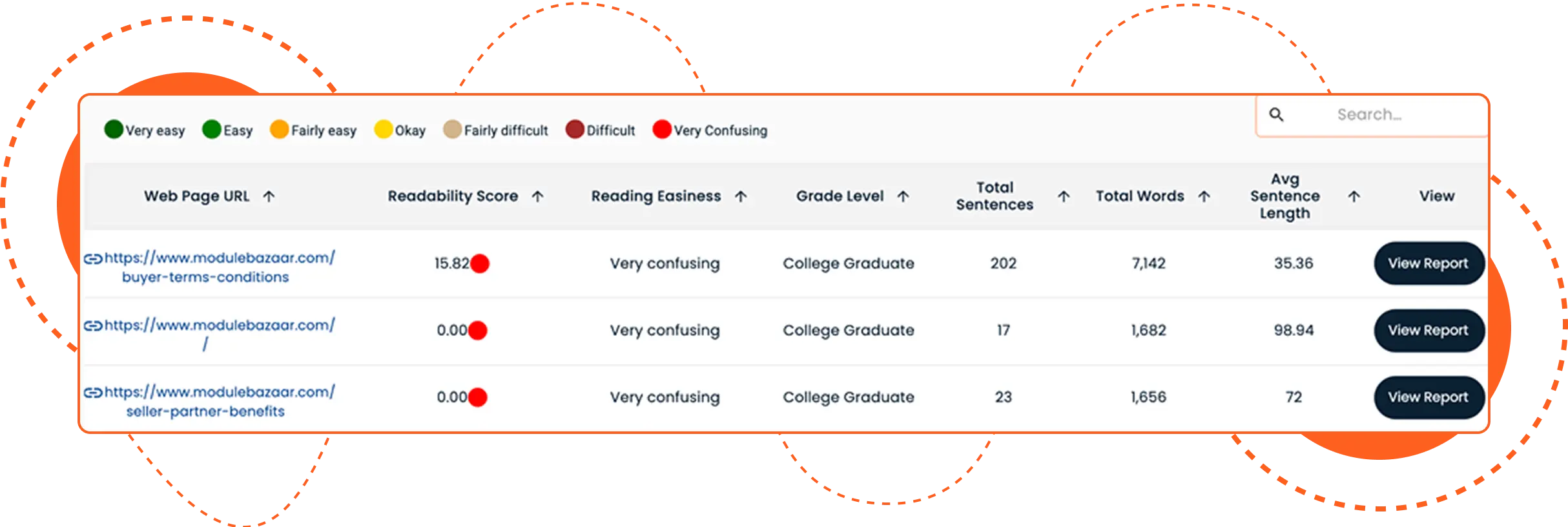Elite Site Optimizer’s analysis section contains
 Meta description length
Meta description length
 Active voice
Active voice
 Page accessible by search engines
Page accessible by search engines
 Links accessible by search engines
Links accessible by search engines
 Page content length
Page content length
 Page title length
Page title length
 Page paragraph length
Page paragraph length
 Content readability score
Content readability score
 Reading ease
Reading ease
 Sentence length
Sentence length
 Rich snippets
Rich snippets
 Open graph
Open graph
Get To Know More About The Content Analysis
Analysis summary is a concise report that presents key metrics on web content performance and quality. It includes readability score, grade level, total sentences and words, average sentence length. This summary helps identify strengths and weaknesses, guiding targeted improvements.
It refers to a specific area in a web analysis or SEO tool where you can manage and view information related to your website's domain. Eg : Home Page: This often indicates the main URL of your website, where primary schema markup is analyzed.
You can add, edit and delete domain sections in the "Settings -> Domain Section Management" page.
Readability relates to how easily a person can read a phrase of text and is also affected by the intricacy of the webpage's content.
Reading ease and grade level are derived based on the readability score of the web page.
The total number of sentences found on the webpage.
The average sentence length of a webpage is determined by dividing the total amount of words by the total number of sentences.
The readability score is determined using the Flesch reading ease score and ESO's algorithm. The readability score and count statistics' accuracy is determined by the coefficients for web page content and HTML structure.
The report is organized into three sections: passed, acceptable, and failed.
Page content length is the total number of words in the URL. Passed: 800-1200 words; acceptable: 400–800 words; failed: less than 400 words or more than 1200 words.
Page title length refers to the number of characters in the page's meta title. Passed: 55-60 characters; acceptable: 45-54 characters; failed: fewer than 45 or greater than 60 characters
The content should be understandable by an average reader, typically matching a specific grade level to ensure accessibility.
You can download the summary of the report in PDF and CSV format. The detailed report of a single web page can be downloaded in PDF format.
Sometimes, the website's server firewall, defenders, and security plugins implemented may affect Elite Site Optimizer from crawling the website and generating reports. To avoid this situation, Elite Site Optimizer's crawler IPs should be whitelisted in the website's server firewall, defenders, and security plugins implemented for the website.
Please add the following IPs in your firewall:
- 1) 44.240.233.25
- 2) 35.82.149.10
identity or website?


